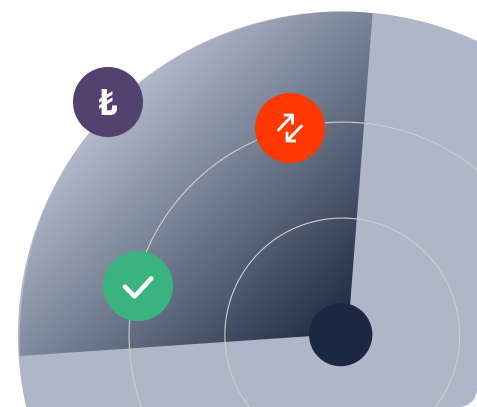E-commerce fraud is a multi-billion dollar headache, constantly evolving and demanding robust fraud prevention measures. Beyond basic checks, effective fraud detection now heavily relies on user behavior analysis. This approach is crucial for enhancing e-commerce security and overall cybersecurity. While traditional methods like address verification are essential, sophisticated fraudsters easily bypass them. Research highlights that relying solely on static data isn't enough . The real battleground is understanding how users interact with your site. By analyzing user behavior data, including behavioral biometrics, businesses can unlock powerful insights for online fraud detection, differentiate legitimate customers from malicious actors in real-time, and significantly contribute to chargeback prevention.
 Özgül Yavuz Kaddoura
Özgül Yavuz Kaddoura
How User Behavior Data Unmasks E-commerce Fraudsters

The Limits of Traditional Fraud Checks
Basic fraud checks often focus on static transaction data: billing vs. shipping address, CVV match, maybe IP geolocation. While necessary, these are easily spoofed. Fraudsters use stolen credentials, VPNs, and sophisticated bots designed to mimic legitimate users. They might even use real user devices compromised by malware . This "fake traffic syndrome" means simple checks often fail, leading to significant financial losses, estimated in the billions annually across digital platforms. Relying only on these methods leaves you vulnerable.

What is User Behavior Analysis for Fraud Detection?
User behavior analysis goes deeper than the transaction itself. It involves monitoring and analyzing how a user interacts with your website or app during their entire session. The goal is to identify anomalies – deviations from typical human behavior – that signal potential fraud. This involves collecting data points like:
- Navigation speed and paths
- Mouse movement dynamics (speed, curvature, clicks)
- Keystroke analysis (typing speed, rhythm)
- Scrolling behavior
- Time spent on pages or specific fields
- Device and browser information intricacies
- Interaction with forms (copy-pasting vs. typing)

Key Behavioral Indicators Flagging Potential Fraud
Session & Navigation Anomalies:
Legitimate users typically browse, compare products, and follow relatively logical paths. Fraudsters often exhibit unnatural navigation:
Impossible Speed: Moving through checkout faster than humanly possible.
Unusual Paths: Directly landing on checkout pages without browsing.
High Velocity: Rapid-fire attempts with different cards or details.
Lack of Engagement: Minimal time spent on product pages before adding high-value items to the cart.

Interaction & Input Data Strangeness
How users interact with forms and elements provides rich data:
Copy-Pasting: Consistently pasting information into fields instead of typing, especially across multiple attempts.
Abnormal Typing Speed/Rhythm: Typing significantly faster or slower than average, or with unnatural consistency.
Hesitation/Correction: Unusual amounts of hesitation or corrections on sensitive fields like payment details.
Odd Scrolling: Lack of scrolling on pages where it's expected, or robotic, uniform scrolling patterns.

Device, Browser & Location Clues
- Proxy/VPN Usage: Consistent use of proxies or known data center IPs, especially when combined with other flags .
- Mismatching Data: Browser language/time zone inconsistent with IP geolocation or shipping address.
- Suspicious User Agents: Use of outdated browsers, headless browsers, or known bot signatures.
- Device Emulation: Attempts to mimic legitimate devices that don't quite match typical fingerprints.

Mouse Dynamics & Behavioral Biometrics
- Robotic Movements: Perfectly straight lines, unnatural jitter, or lack of typical human pauses/curves.
- Click Anomalies: Click patterns inconsistent with human interaction (e.g., clicking invisible elements).
- Lack of Movement: No mouse activity on pages where interaction is expected.
Analyzing these micro-movements creates a "behavioral fingerprint" that is incredibly difficult for bots to replicate accurately.

The Power of AI and Machine Learning
Pattern Recognition: Identifying subtle, complex patterns across thousands of user sessions that indicate fraud, often missed by human analysts or simple rules.
Real-Time Analysis: Processing data instantly as users interact, allowing for intervention before a fraudulent transaction completes.
Adaptability: Learning from new fraud patterns as they emerge, making the system more robust over time against evolving threats. Research consistently shows ML/AI approaches outperform older rule-based systems .
Anomaly Detection: Using unsupervised learning to spot novel fraud types never seen before.

Protect Your Conversions, Starting with Your Clicks
The same principles of analyzing behavior and using AI to detect anomalies are crucial for stopping ad fraud before it impacts your e-commerce funnel. Ensure the traffic reaching your site is genuine and your ad spend isn't wasted on bots or fraudulent clicks.
ClickSambo uses advanced AI and behavioral analysis to eliminate invalid traffic and protect your marketing ROI.
Learn How ClickSambo Stops Ad Fraud
Request Your Free Ad Traffic Analysis

Protecting your business means ensuring your ad campaigns aren't attracting bots and bad actors in the first place

